Introduction
Uttarakhand, known as Devbhumi (Land of the Gods), hosts a rich tapestry of sacred sites, legendary shrines, and spiritual energies. Here’s your complete guide to the most revered temples, along with practical insights for travelers.
1. Badrinath Temple (Chamoli District)
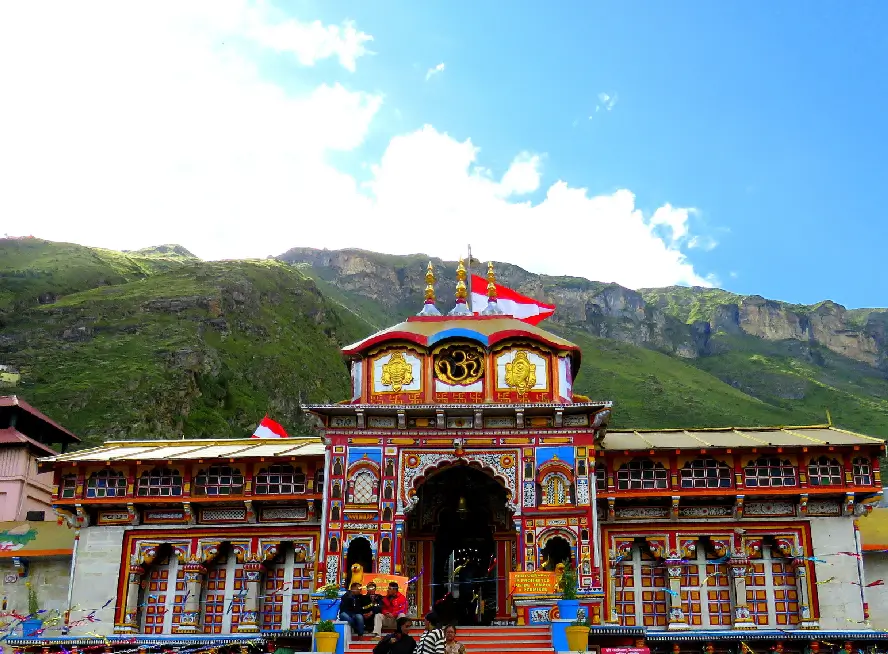
- Deity: Lord Vishnu (Badri‑Narayana)
- Altitude: ~3,133 m above sea level
- Significance: A major site in India’s Char Dham Yatra and Panch Badri circuit, originally revived in the 9th century by Adi Shankaracharya
- Architecture: Stone‑built sanctum, arched gateway, gilded roof, pillared hall with intricate carvings
- Best Time to Visit: May to November
- Accessibility: Road up to Badrinath town via Joshimath; nearest rail at Rishikesh/Kotdwara, Jolly Grant airport at Dehradun
- Nearby Accommodation: Mid-range hotels and GMVN lodges in Badrinath town (~₹1,500–6,000); premium options in Joshimath.
2. Kedarnath Temple (Rudraprayag District)
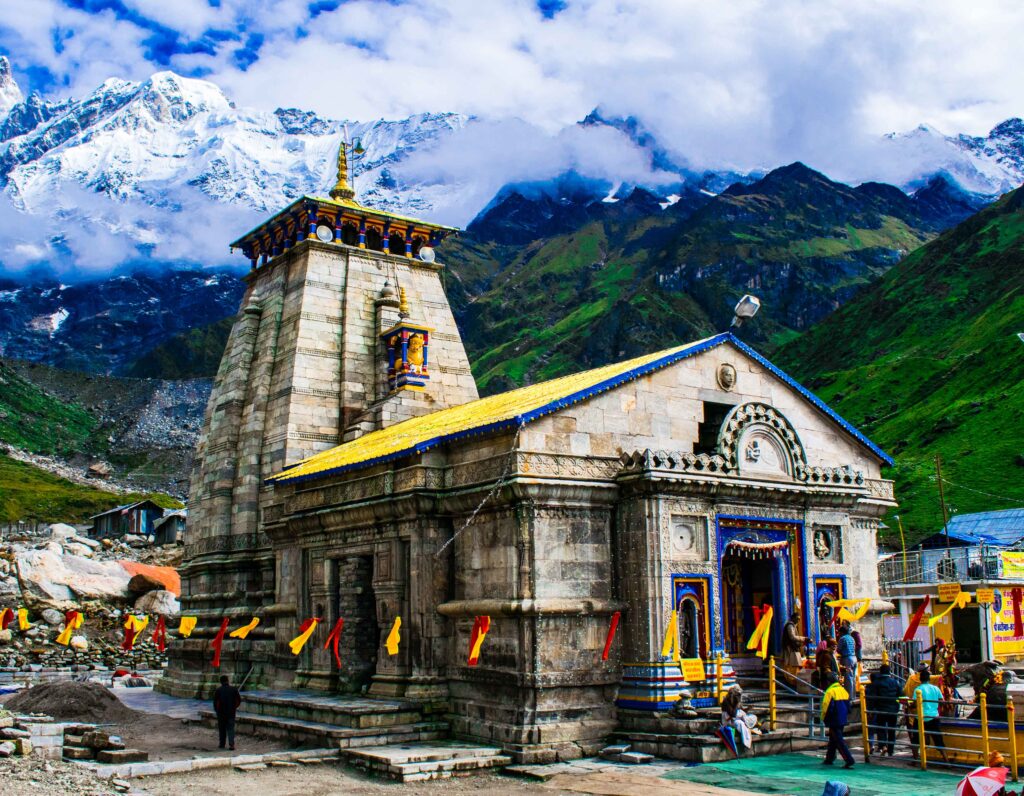
- Deity: Lord Shiva (Jyotirlinga)
- Altitude: ~3,583 m
- Significance: One of the twelve Jyotirlingas and first of the Panch Kedar Temples. Legend ties it to the Pandavas and Adi Shankaracharya
- Opening Window: Late April (Akshaya Tritiya) to Kartika Purnima (October/November)
- Access: 17 km trek from Gaurikund or helicopter rides from Phata/Sonprayag; winter deity shift to Ukhimath
- Stays: Basic lodges at Gaurikund and Sonprayag (₹3,000–6,000).
3. Tungnath Temple (Rudraprayag District)
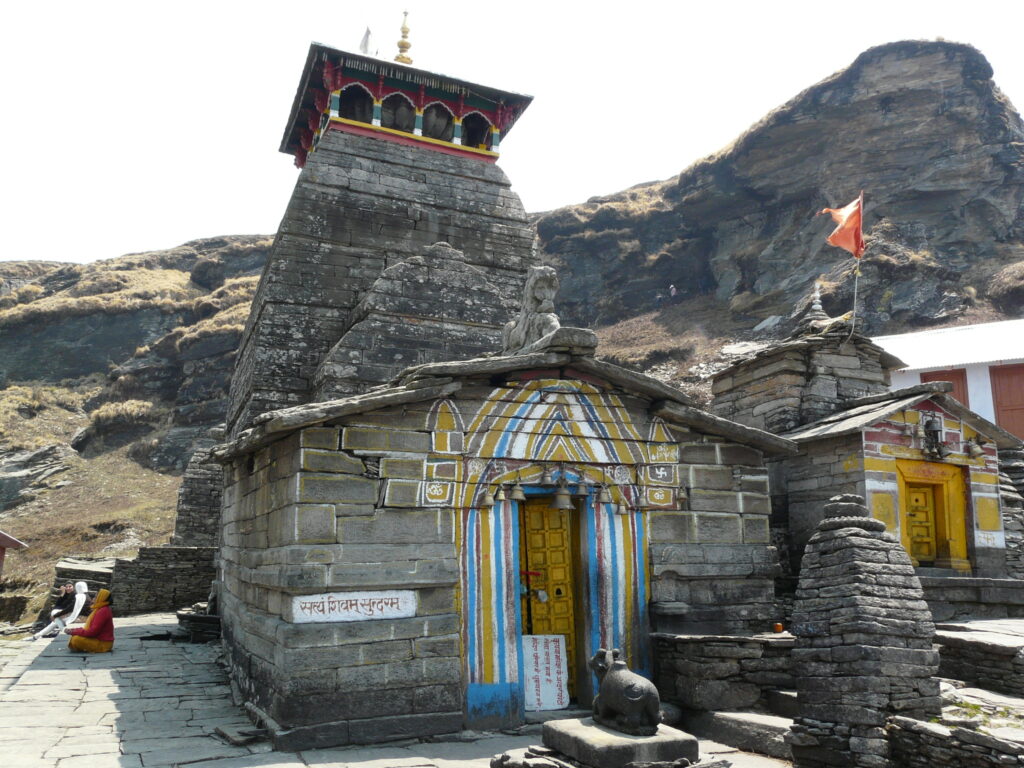
- Deity: Lord Shiva – one of the Panch Kedar
- Altitude: ~3,680 m—highest Shiva temple in the world
- Significance: Built over 1,000 years ago, rediscovered by Adi Shankaracharya, features spectacular Himalayan views
- Access Route: 3.5 km trekking from Chopta; Chopta reachable by road from Rudraprayag.
- Best Time: April to November
- Nearby Stay: Camps and eco-lodges in Chopta (~₹2,000–5,000 per night).
4. Rudranath Temple (Chamoli, Garhwal)
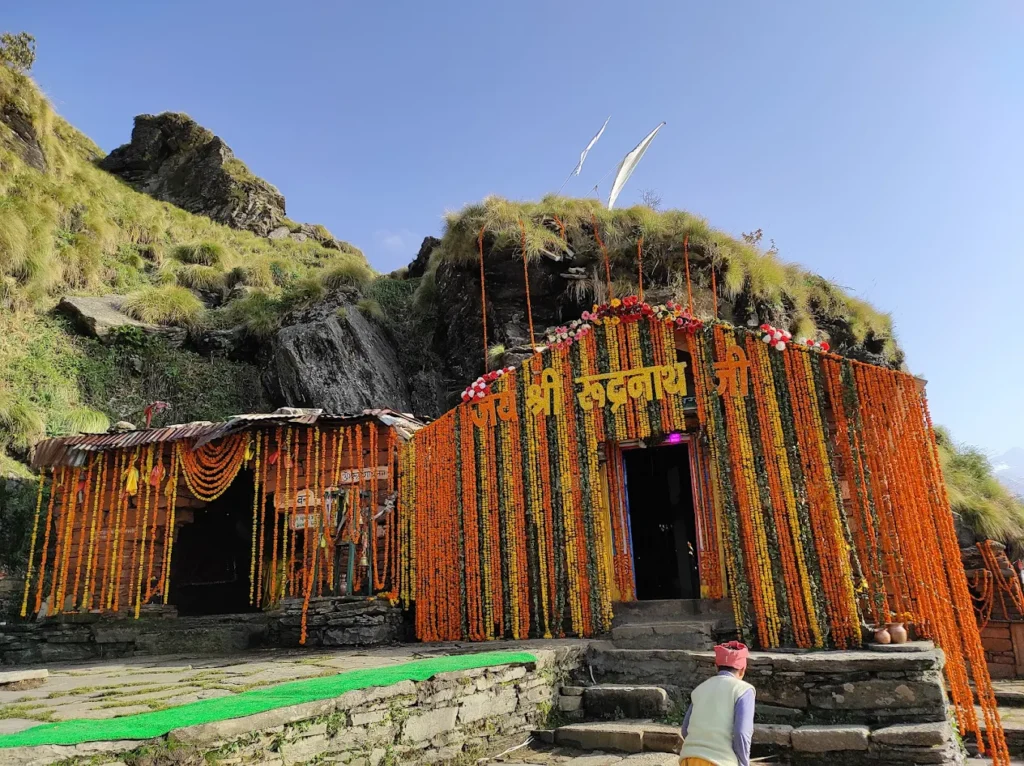
- Deity: Lord Shiva
- Altitude: ~3,550 m
- Significance: Fourth temple in the Panch Kedar circuit, famed for ancestral rituals—often equated to performing pind offerings at Gaya
- Natural Surroundings: Set in rhododendron forests with panoramic views of peaks like Trishul, Nanda Devi; sacred kunds nearby
- Best Time to Visit: May to October
- Accommodation: Basic pilgrim huts in Rudranath or shared camping (~₹500–2,000); stays at Gopeshwar/Ukhimath for pre- or post-hike comfort.
5. Baijnath Temple Complex (Bageshwar District)
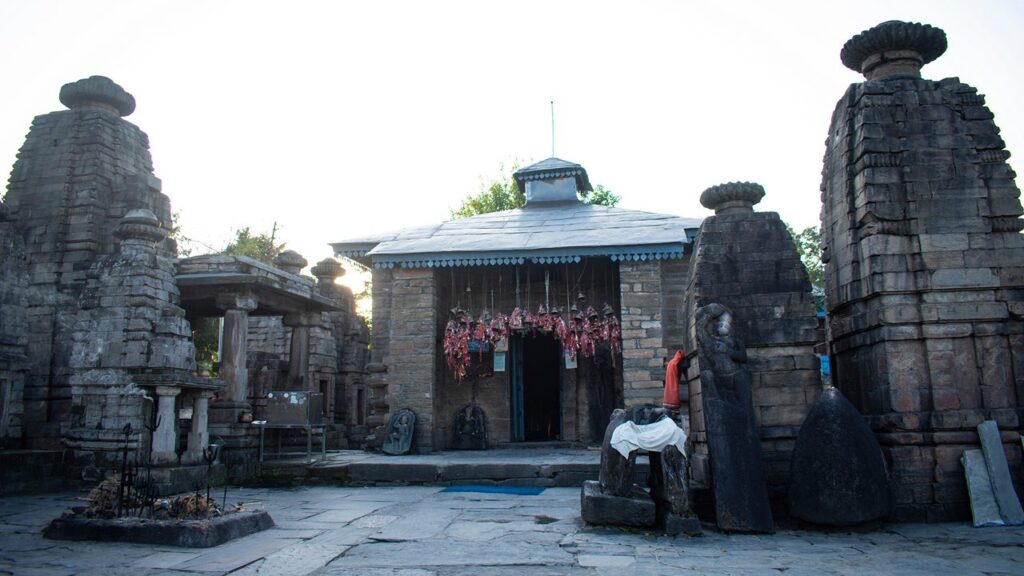
- Deity: Lord Shiva (Vaidyanath) and Parvati
- Altitude: ~1,125 m above sea level
- Significance: A cluster of 18 temples from the 12th century by Katyuri kings; unique depiction of Shiva with Parvati together
- Architecture: Classic Nagara‑style stone carvings featuring numerous deities including Karttikeya and Surya
- Best Time: March to June and September to November
- Access: Accessible by road from Bageshwar/Kausani; nearest rail at Kathgodam, airport at Pantnagar.
- Nearby Stay: Modest hotels and guesthouses in Baijnath town (~₹1,500–4,000); Kausani for scenic mid-range stays.
6. Jageshwar Temple Complex (Almora District)
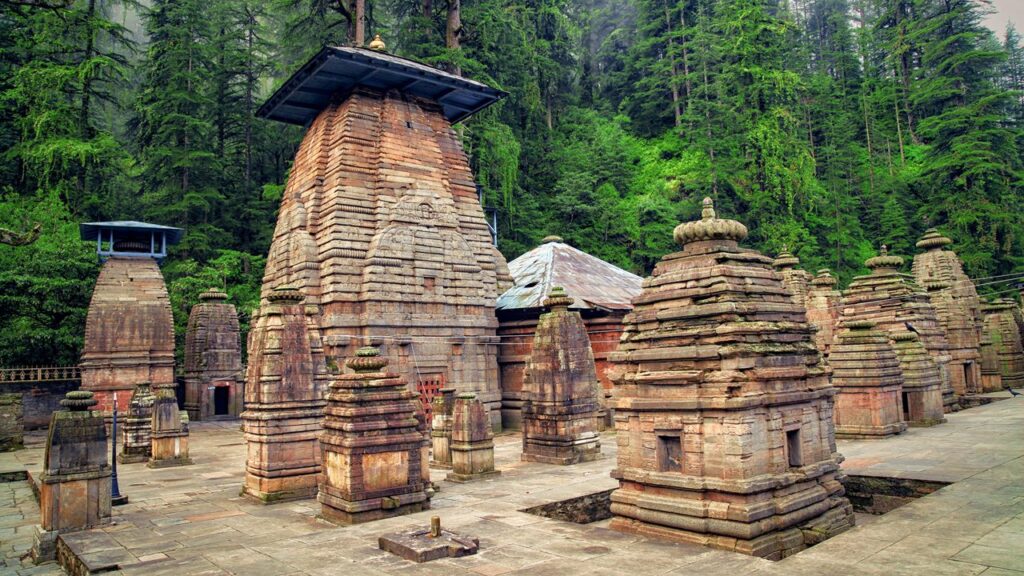
- Deity: Lord Shiva
- Altitude: ~1,870 m
- Significance: Over 100 Shanivasa temples dating to 9th century, considered among ancient Jyotirlinga sites
- Forest Setting: Located amidst deodar woodland with a stream and scenic mountain backdrop
- Best Time to Visit: March–June & September–November
- Access: 37 km from Almora, reachable by local roads and forest pathways
- Accommodation: Homestays and resorts in Jageshwar (~₹1,500–5,000); Almora for broader options.
7. Gangotri Temple (Uttarkashi District)
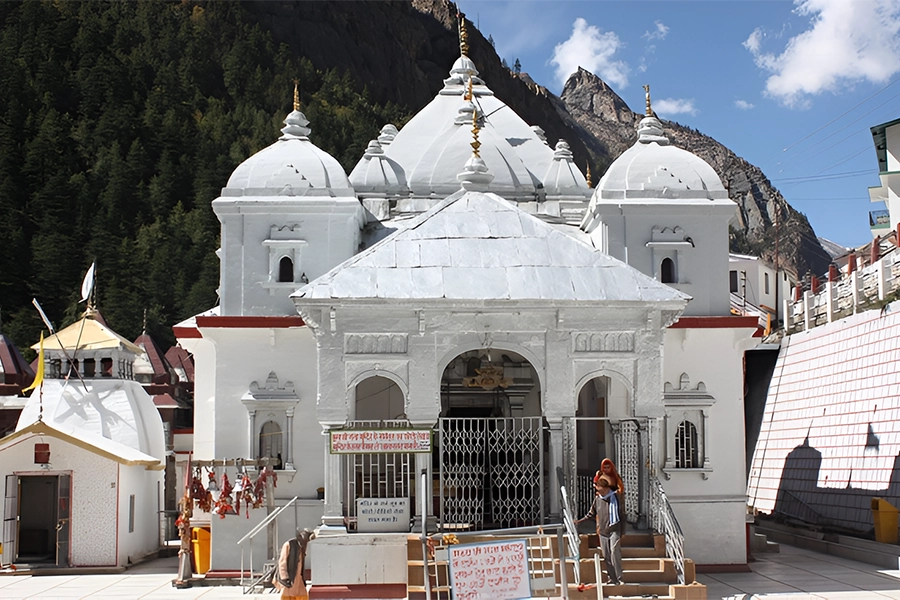
- Deity: Goddess Ganga
- Altitude: ~3,100 m
- Significance: Marks the origin of the sacred Ganges river; central to Char Dham pilgrimage
- Architecture & Setting: North Indian Himalayan temple on Bhagirathi riverbank, surrounded by Himalayas.
- Best Time: May to October
- Travel Info: Road up to Gangotri from Uttarkashi.
- Stay: Modest guesthouses and ashrams in Gangotri (~₹1,200–3,000), Uttarkashi for higher comfort.
8. Yamunotri Temple (Uttarkashi District)
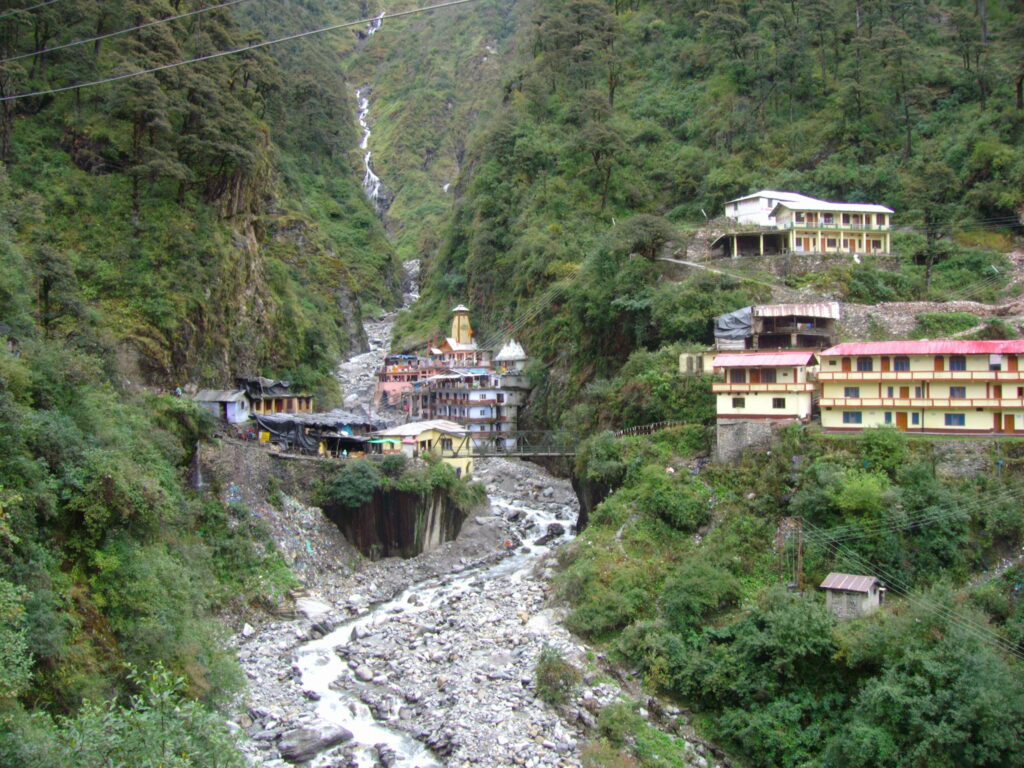
- Deity: Goddess Yamuna
- Altitude: ~3,293 m
- Significance: Recognized as the source of the Yamuna River; a Char Dham pilgrimage site
- Route: 6 km trek from Janki Chatti; hot springs like Surya Kund are nearby
- Best Time: May–June and September–October
- Stays: Inns and lodges at Janki Chatti (₹2,000–5,000).
9. Neelkanth Mahadev Temple (Rishikesh Area)
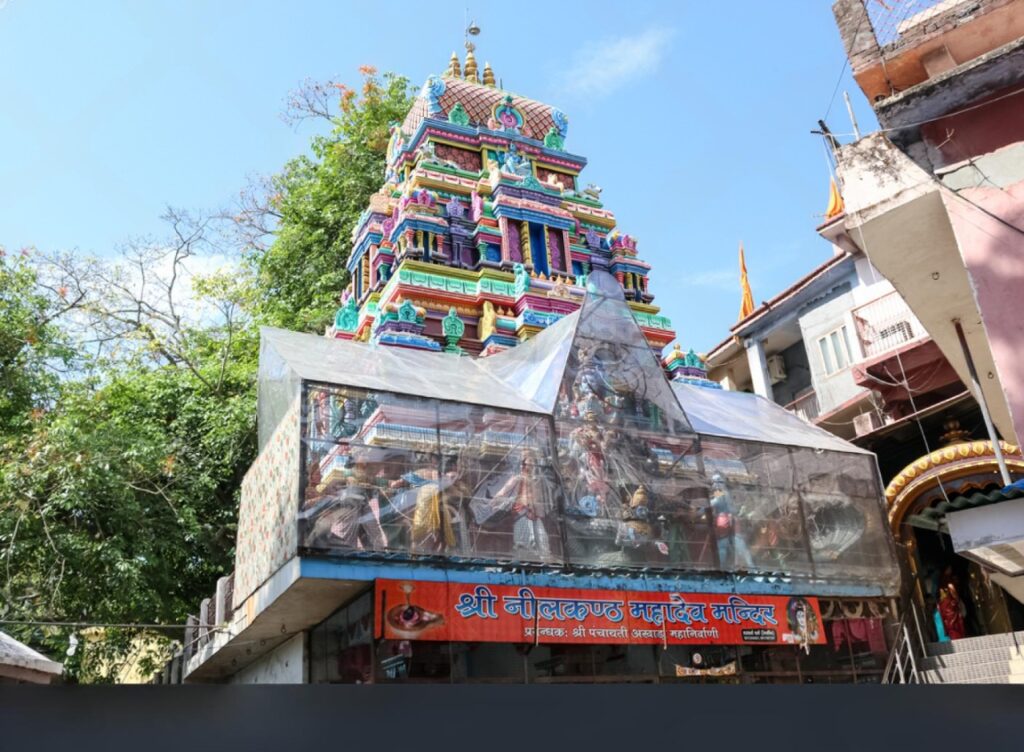
- Deity: Lord Shiva
- Altitude: ~1,330 m
- Legend: Built at the spot where Shiva consumed the poison during Samudra Manthan.
- Access: 30 km from Rishikesh—accessible by road via Sonprayag, followed by a short walk.
- Best Times: September–March for cooler and clearer views.
- Accommodations: Budget and mid-range guesthouses and ashrams in Rishikesh (~₹800–3,500); riverside hotels offer scenic lodging.
10. Mansa Devi Temple (Haridwar)
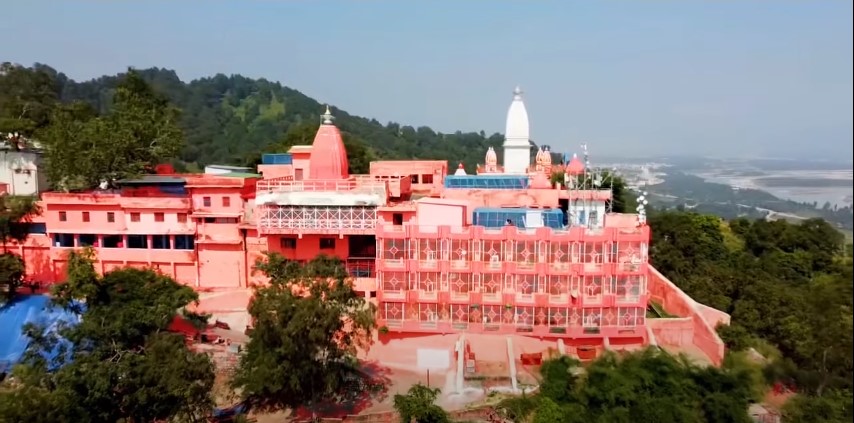
- Deity: Goddess Mansa (Shakti)
- Locale: Bilwa Parvat, overlooking Har Ki Pauri at Haridwar
- Beliefs: Grantor of wishes, devotees seek relief from serpent curses (Sarpa Dosha).
- Access: Reachable by ropeway or trekking trail (~2 km) from Haridwar.
- Best Time: Year-round, especially during Navaratri.
- Stay: Haridwar offers a wide range from budget pilgrim stays (₹3,000–6,000).
11. Kunjapuri Devi Temple (Tehri Garhwal)
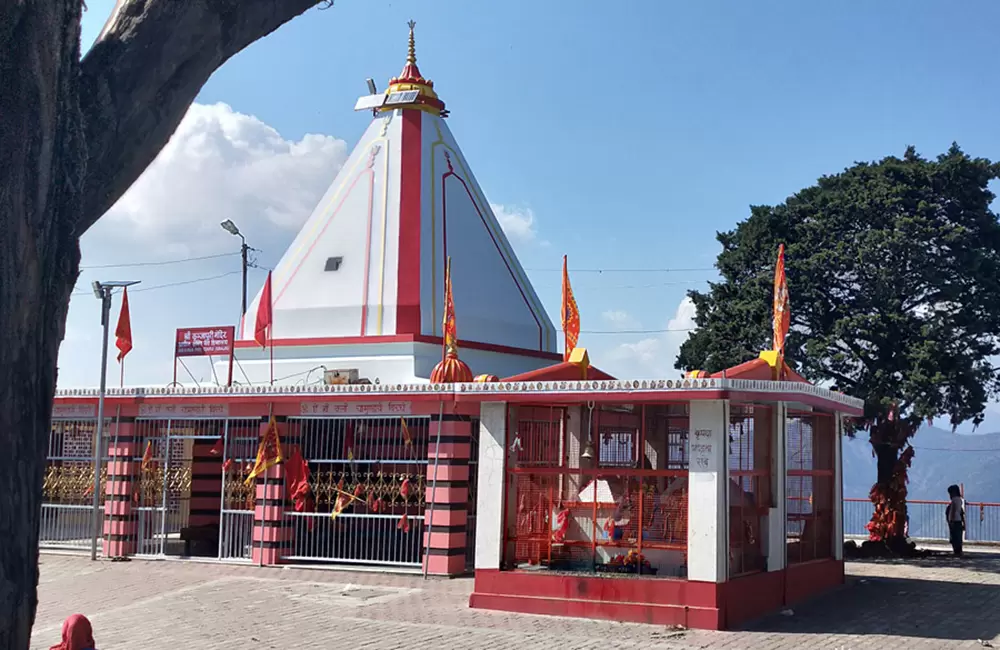
- Deity: Goddess Kunjapuri, an incarnation of Durga
- Altitude: ~1,676 m
- Views & Experience: Offers panoramic sunrise views over the Doon Valley and Himalayan peaks.
- Access: 1.5 km trek from village, or ride.
- Best Time: May to October (avoid heavy monsoon).
- Nearby Stay: Rishikesh (₹1,200–5,000); guest houses around Kunjapuri or ashram accommodation.
12. Chitai Golu Devta Temple (Almora District)
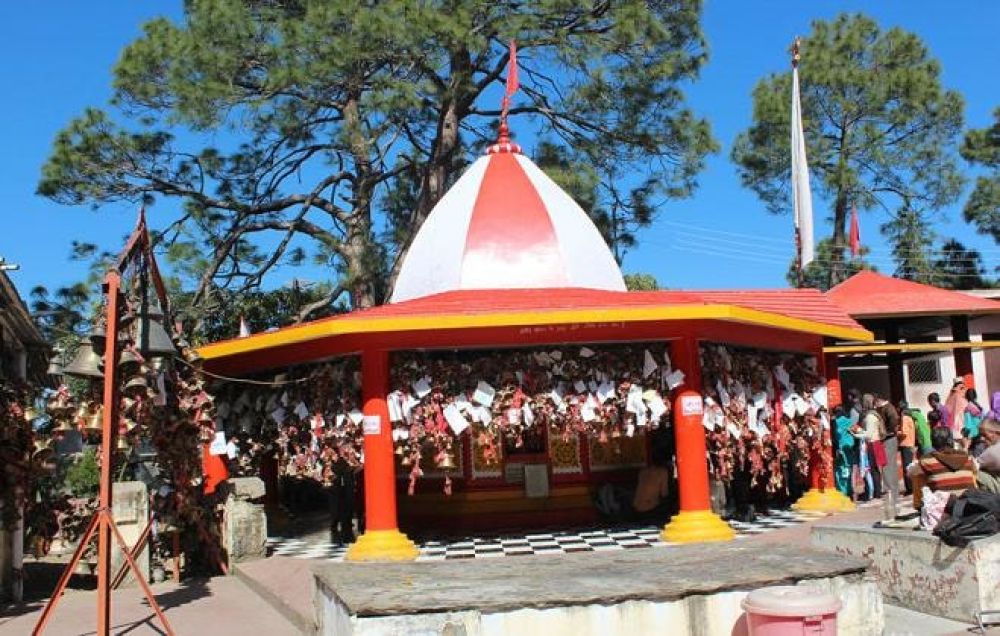
- Deity: Golu Devta, local god of justice
- Significance: Known for the thousands of bells devotees hang; devotees lodge written petitions for justice and fulfillment of vows
- Access: 9 km from Almora by road.
- Stay: Almora’s lodges and heritage hotels (~₹1,500–5,000).
Other Noteworthy Temples
- Dhari Devi Temple (Srinagar, Pauri Garhwal): Important Shakti Peetha on Alaknanda riverbank, with shape-shifting idol traditions
- Surkanda Devi Temple (near Dhanaulti, Tehri region): Hilltop Shakti shrine with ropeway access and Himalayan views (~3,038 m)
- Kartik Swami Temple (Rudraprayag): At 3,450 m on Kanak Chauri ridge, popular trekking pilgrimage with panoramic views and Shaiva worship
- Madhyamaheshwar Temple (Gaundar, Chamoli): Third shrine in Panch Kedar, worship of Shiva’s navel–linga after trek from Ransi (~3,490 m)
🗺️ Temple Comparison Table
Temple | Deity | Altitude (m) | Spiritual Significance | Best Season |
Badrinath | Vishnu | ~3,133 | Char Dham, Panch Badri | May–Nov |
Kedarnath | Shiva (Jyotirlinga) | ~3,583 | Char Dham, Panch Kedar | Apr–Nov |
Tungnath | Shiva | ~3,680 | Panch Kedar, highest Shiva temple | Apr–Nov |
Rudranath | Shiva | ~3,550 | Panch Kedar, ancestral rites | May–Oct |
Gangotri | Ganga | ~3,100 | Char Dham | May–Oct |
Yamunotri | Yamuna | ~3,293 | Char Dham | May–Oct |
Baijnath Complex | Shiva & Parvati | ~1,125 | Antiquity, Katyuri era arts | Mar–Jun, Sep–Nov |
Jageshwar Complex | Shiva | ~1,870 | Ancient Jyotirlinga, deodar grove | Mar–Jun, Sep–Nov |
Neelkanth Mahadev | Shiva | ~1,330 | Mythological serpent-poison site | Sep–Mar |
Mansa Devi | Shakti (Mansa) | ~600 | Wish fulfillment, serpent dosha relief | Year-round |
Kunjapuri Devi | Durga | ~1,676 | Hilltop Shakti view point | May–Oct |
Chitai Golu Devta | Local Deity (Shiva) | ~1,600 | Justice and offerings via bells | Year-round |
🧳 Travel & Budget Notes
- Accessibility: Mountain temples (Tungnath, Rudranath, Kartik Swami) often require trekking. Road access ends at base villages first.
- Altitude Awareness: Above ~3,000 m, mild acclimatization and warm clothing are essential.
- Accommodation Costs:
- Basic pilgrim stays: ₹500–2,000/night
- Mid‑range guesthouses/homestays: ₹1,500–5,000/night
- Limited premium stays available near major Char Dham hubs (~₹6,000+)
- Booking Tip: Early booking advised for peak seasons and Char Dham circuits.
- Pilgrimage Seasons: Most Himalayan shrines open from May–June and close by October–November, based on weather.
- Local Infrastructure: Ropeway projects underway at Kunjapuri and improved helipad connectivity for Kedarnath and Char Dham sites.
🙏 Why These Temples Matter
- Spiritual Depth: These temples are essential pilgrimage destinations in Hindu belief—many forming part of the Char Dham or Panch Kedar circuits, each with unique mythological significance.
- Architectural Heritage: Ranging from Nagara‑style stone carvings at Baijnath and Jageshwar to pilgrimage caves serving ritual purposes at Rudranath and Tungnath.
- Natural Splendor: Nestled in Himalayan valleys and forests, often surrounded by glacial rivers, high peaks, and sacred kunds—merging nature with divinity.
- Cultural & Ritual Practices: From components of ancient dynasties (Katyuri at Baijnath) to Shakti tales, Golu Devta justice rites, and modern ropeway connectivity—the temples reflect evolving tradition.
🧭 Final Reflections
Whether you seek tranquillity and divine presence or are on a spiritual trekking route to the Char Dham shrines, Uttarakhand’s temples offer a rich, unforgettable experience. Each site—be it the soaring heights of Kedarnath, the forest serenity of Jageshwar, or the prayer bells of Chitai—carries its own spiritual energy, cultural legacy, and Himalayan vistas.
These sacred destinations transcend tourism—they connect travelers to ancient belief systems, ecological wisdom, and natural beauty rooted deep in Devbhumi’s ethos. For personalized itineraries, festival timings, or pilgrimage planning, feel free to ask!